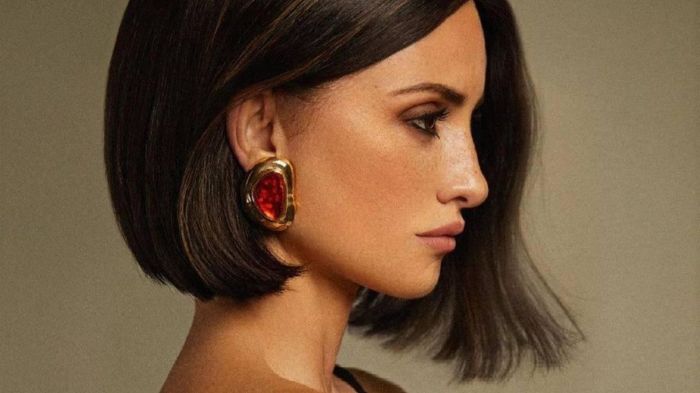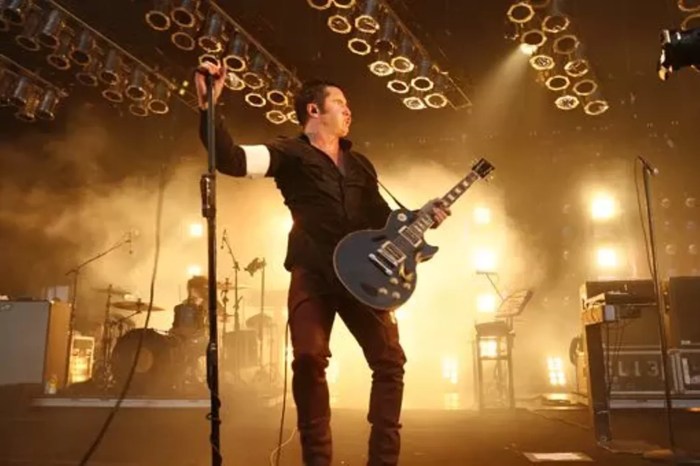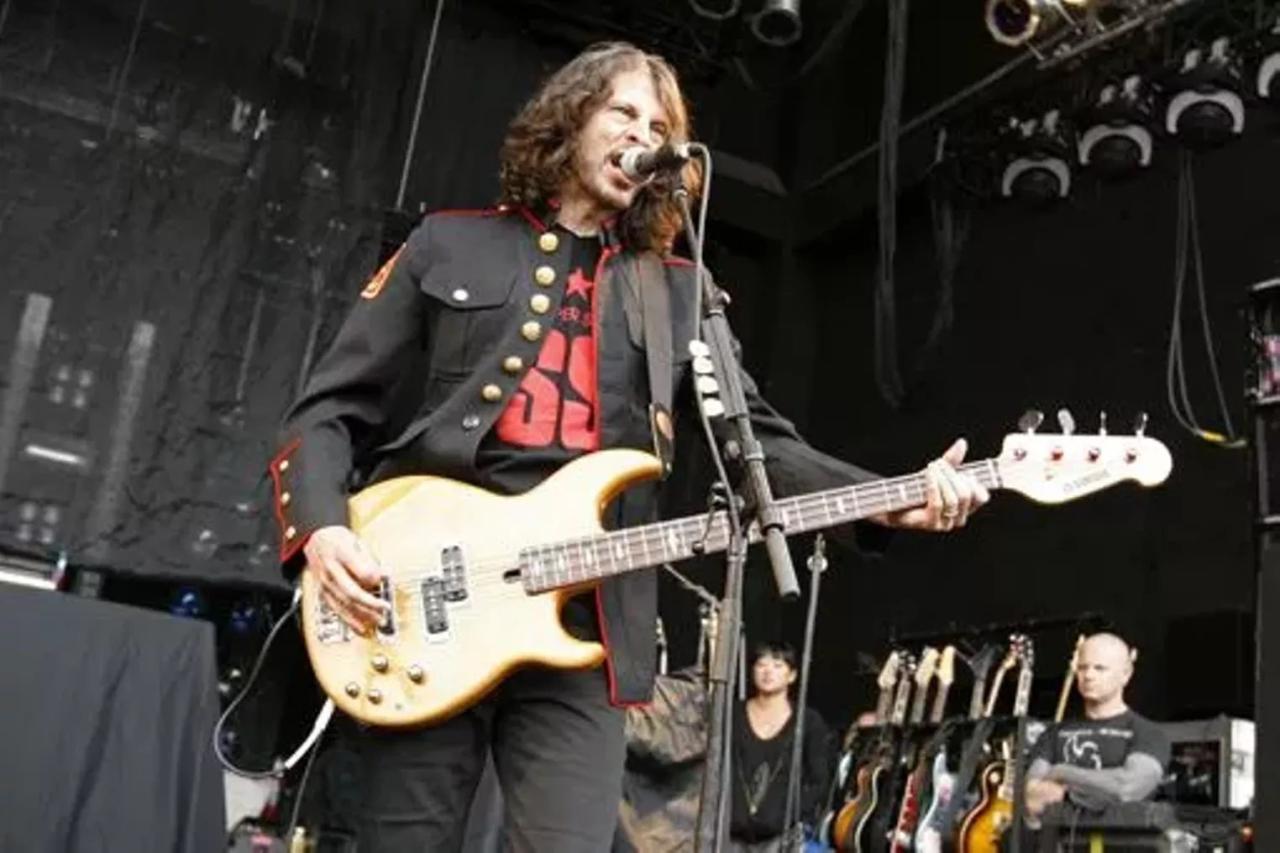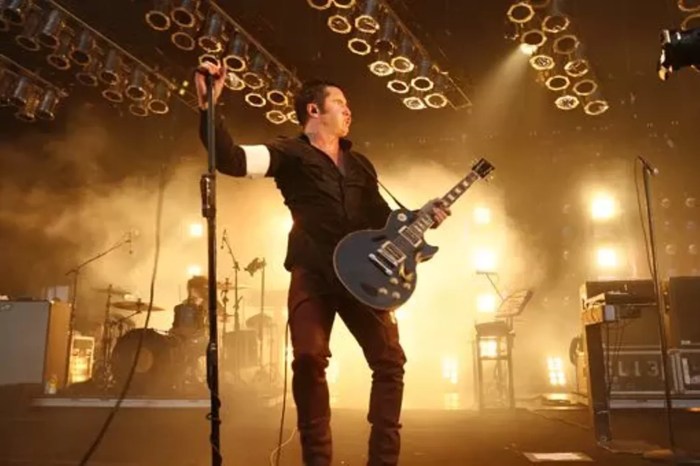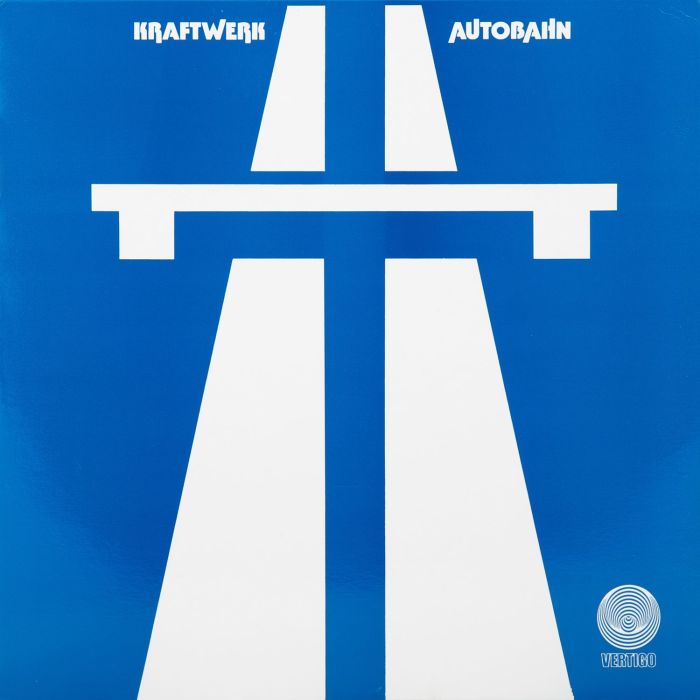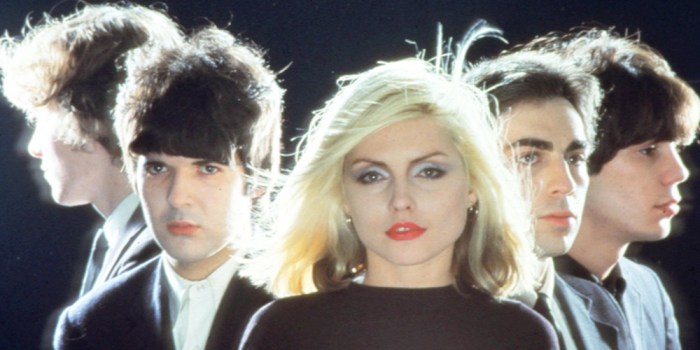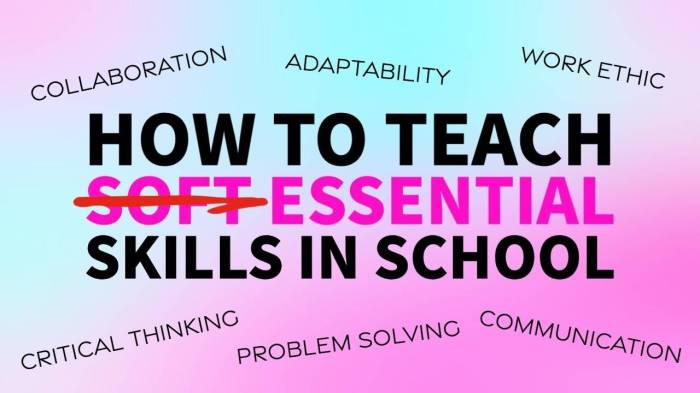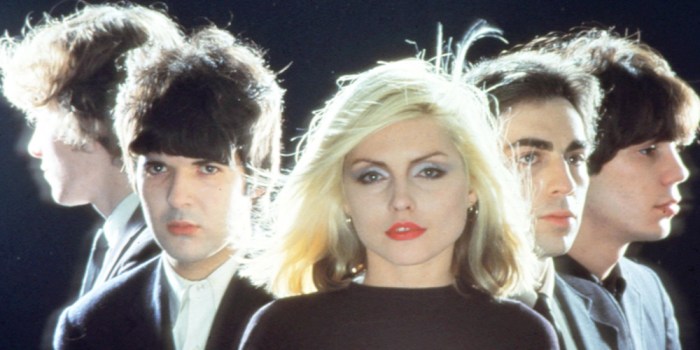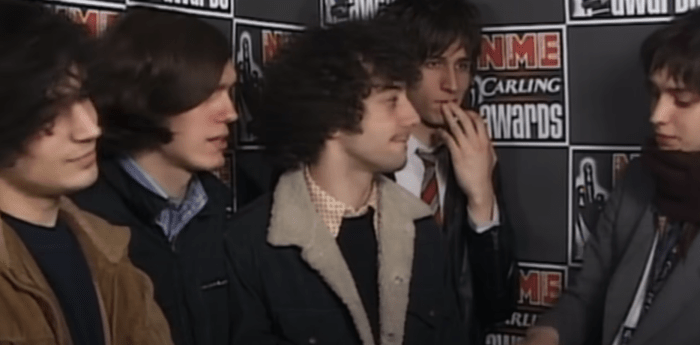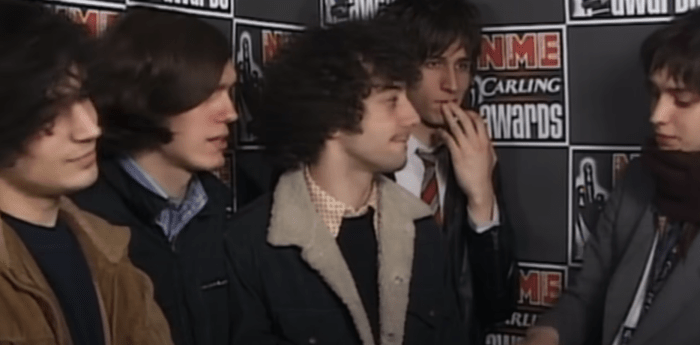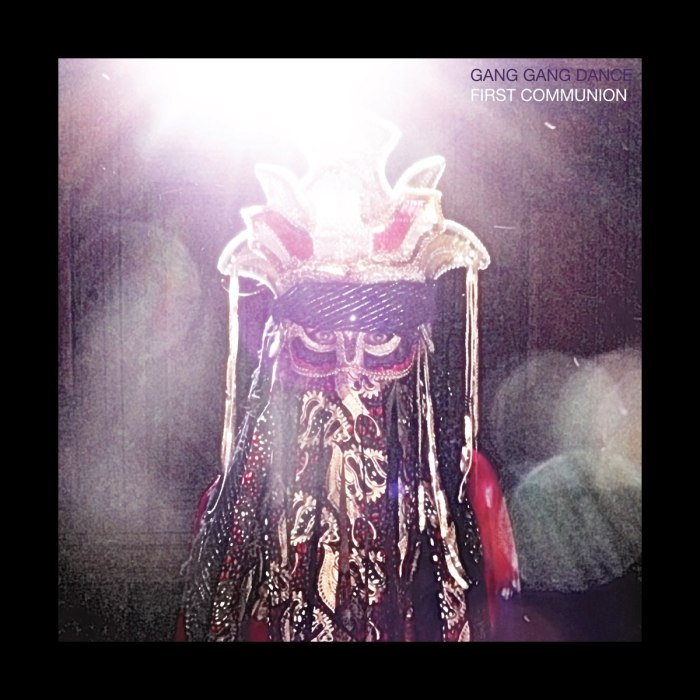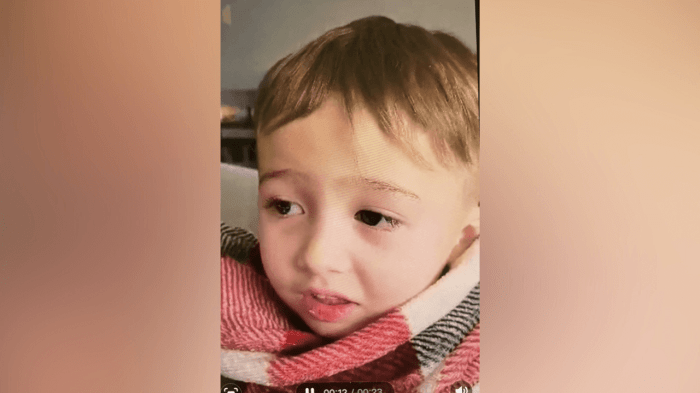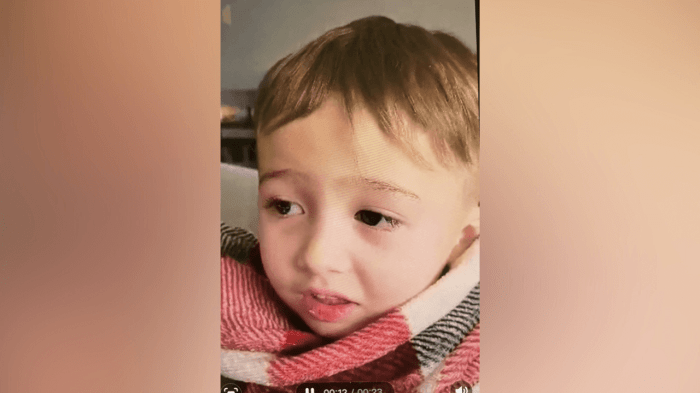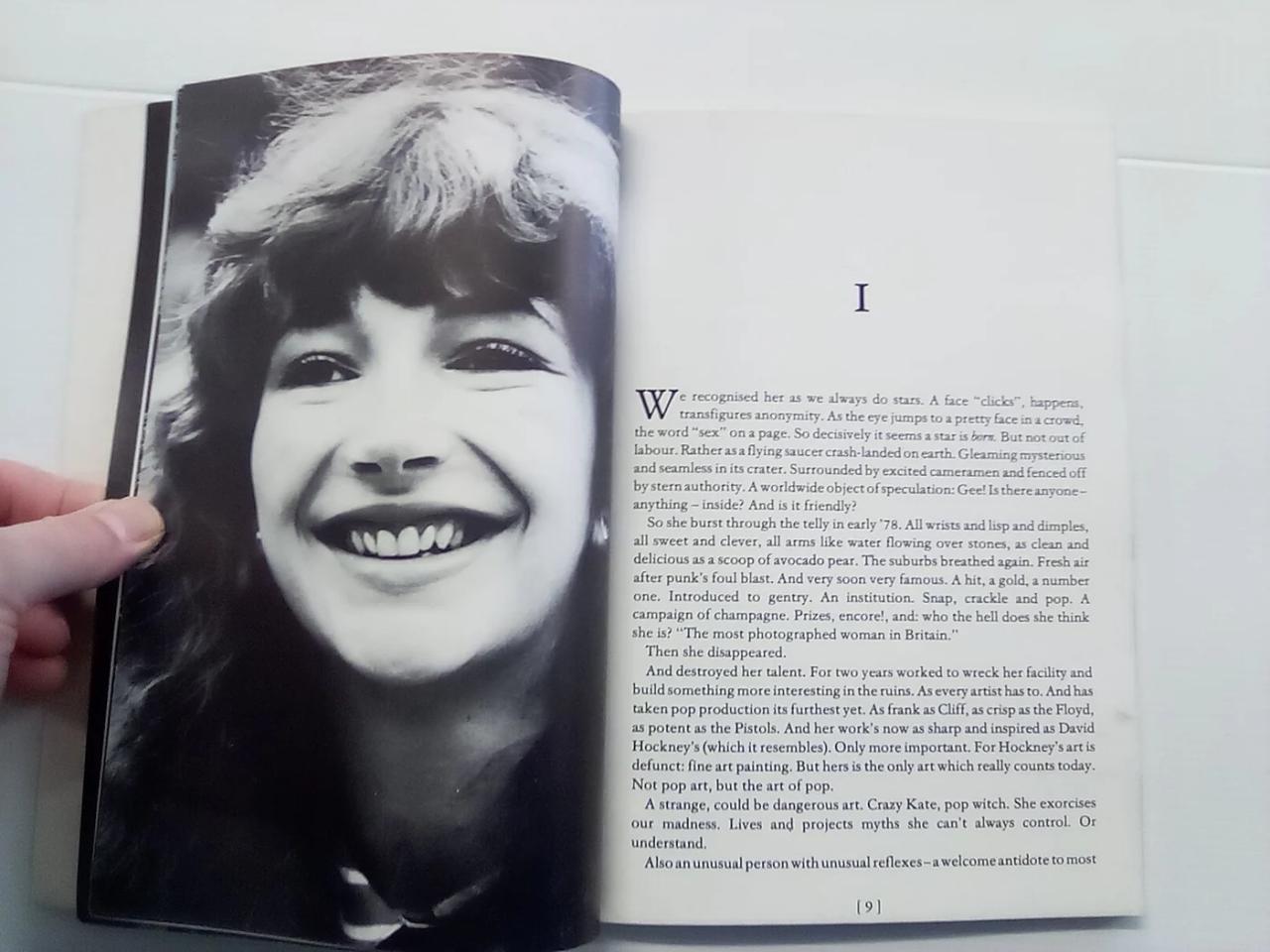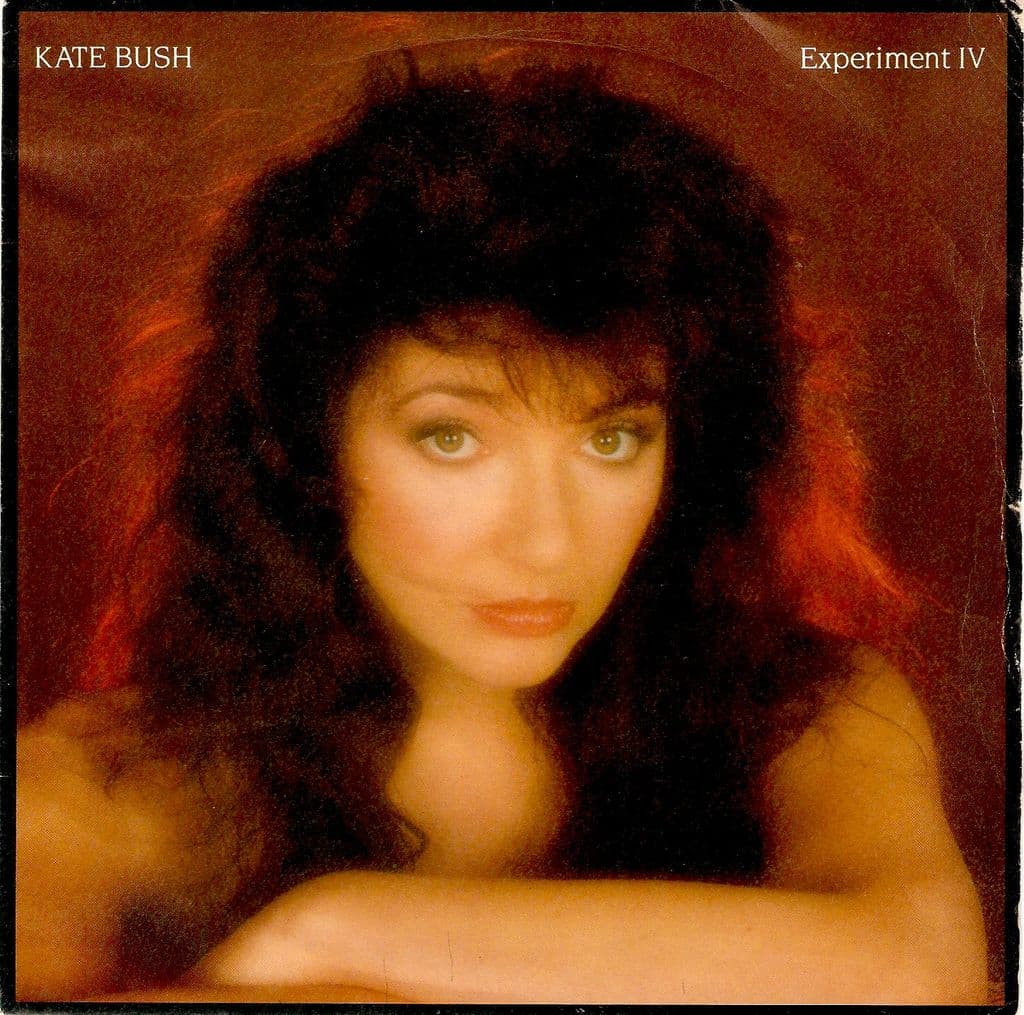Echo Chamber Bob Dylan explores how Bob Dylan’s evolving persona and public image have been shaped by the echo chambers of media, fan communities, and the counterculture. This deep dive analyzes how his lyrics, music, and interactions with various audiences have created, and perhaps even embraced, these echo chambers. We’ll examine the evolution of his image, the role of media narratives, and how themes of isolation and alienation resonate within his work.
From his early career to his influence on subsequent artists, we’ll unpack the complexities of Dylan’s relationship with the world and his enduring legacy.
This exploration delves into the specific ways Dylan’s music has reflected and responded to societal shifts, highlighting how the concept of an echo chamber has evolved alongside the music industry and technology. We’ll examine his relationship with the counterculture movement and how his work was interpreted and received within those communities. By comparing and contrasting his reception by different audiences, we’ll get a more nuanced perspective on the artist and his impact.
Bob Dylan’s Persona and the Concept of an Echo Chamber
Bob Dylan’s career is a fascinating study in evolving artistic persona and public perception. His music, deeply intertwined with social and political commentary, has often been interpreted as a reflection of the artist’s own internal struggles and external pressures. This exploration delves into the ways Dylan’s persona has shifted over time, examining the potential for his work to be seen as an echo chamber, where self-created narratives and perceptions might dominate.Dylan’s initial persona, the folk singer of protest, contrasted sharply with the later, more enigmatic figure.
This transformation reflects the artist’s own evolution, as well as the changing landscape of popular culture and the media’s portrayal of him. His music, often laden with symbolism and ambiguity, allows for multiple interpretations, leading to a complex and multifaceted understanding of the artist and his relationship with the world around him.
Historical Overview of Dylan’s Evolving Persona
Dylan’s early work, rooted in folk music, often reflected a desire for social change and a critique of societal injustices. This early persona was closely tied to the burgeoning counterculture movement of the 1960s. The imagery of a rebellious figure challenging authority resonated deeply with the times. His early songs, like “Blowin’ in the Wind” and “A Hard Rain’s A-Gonna Fall,” became anthems of a generation.
Different Stages of Dylan’s Career and Associated Narratives
Dylan’s career can be segmented into distinct phases, each marked by a shift in his musical style and public image. The folk era gave way to a more electric sound, a move that initially alienated some fans. The transition was a pivotal moment, marking a shift in both his artistry and his perceived role in society. The later phases saw further experimentation, from the more poetic and introspective to the more experimental.
Lyrics as Reflections of Societal or Personal Isolation
Dylan’s lyrics frequently explore themes of alienation, isolation, and the search for meaning. In many of his songs, the speaker experiences a disconnect from the world around them. This could be interpreted as a reflection of Dylan’s own struggles or a deliberate artistic choice to create a persona of isolation.
Examples of Songs Demonstrating a Sense of Isolation
Several songs vividly illustrate the sense of being trapped within a self-created echo chamber. “Tangled Up in Blue,” for instance, explores the complexities of relationships and the challenges of navigating human connections. The ambiguity of the lyrics and the cyclical nature of the song itself create a sense of being trapped in a pattern. “Like a Rolling Stone” is another prime example, depicting a sense of disillusionment and isolation from societal norms.
The detached tone of the song reflects a persona that feels alienated from the world.
Evolution of Dylan’s Image Over Time
| Year | Album | Key Themes |
|---|---|---|
| 1963 | The Freewheelin’ Bob Dylan | Protest, social change, folk music |
| 1965 | Bringing It All Back Home | Transition to electric sound, more introspective themes |
| 1966 | Blonde on Blonde | Ambiguity, alienation, exploration of relationships |
| 1975 | Blood on the Tracks | Personal struggles, intimate lyrics, raw emotion |
This table provides a concise overview of Dylan’s career, highlighting the evolution of his musical themes and public image. The transition from the folk singer to the more introspective artist is evident in the shifting themes over time.
Dylan’s Relationship with the Media and Fan Base
Bob Dylan’s enduring legacy is intricately woven with his complex relationship with the media and his passionate fanbase. This relationship has often been a source of both creative inspiration and critical scrutiny, shaped by the ever-evolving landscape of media and online discourse. Dylan’s enigmatic persona, coupled with his consistent push against conventional expectations, has fueled both fervent adoration and intense debate.
This dynamic interaction has profoundly influenced the way his music is perceived and interpreted.Dylan’s approach to the media has been marked by a deliberate distance and a calculated resistance to the pressures of conformity. This has, at times, resulted in a perception of aloofness, but it has also fostered an enduring aura of mystique surrounding his artistic endeavors.
The evolution of media itself, from print to broadcast to the internet, has further complicated this dynamic, with each medium amplifying different aspects of Dylan’s persona and creative output. The internet, in particular, has allowed for the rapid dissemination of diverse opinions and interpretations of his work.
Media Narratives and Echo Chambers
Dylan’s music, with its often ambiguous lyrics and evolving style, has invited various interpretations. Mainstream media outlets, seeking to contextualize and commercialize his work, have sometimes crafted narratives that, while informative, may also contribute to echo chambers. These narratives can oversimplify his complex artistic evolution, potentially reducing his multifaceted work to a digestible, marketable image.
Fan Communities and Online Discourse
Fan communities, particularly online, often become crucial in shaping interpretations of Dylan’s work. These online forums and social media groups allow for passionate discussions, analyses, and re-evaluations of his music. While such engagement can be immensely enriching, it can also contribute to the amplification of certain perspectives and the potential distortion of others. The sheer volume and speed of online discourse can make it challenging to discern objective truths from subjective opinions.
Mainstream vs. Niche Reception
Dylan’s reception by mainstream media has often focused on his cultural impact and commercial success. This approach can highlight his mainstream appeal but may overlook the nuanced complexities of his work. Conversely, niche audiences, often drawn to the depth and intellectual stimulation of his lyrics, can delve into the subtleties and layers of meaning that mainstream reviews might miss.
This difference in reception demonstrates the multifaceted nature of Dylan’s appeal.
Dynamics of Online Discourse
Online discourse around Dylan’s work reflects the complexity of human interaction and interpretation. Discussions often hinge on specific songs, albums, or periods of his career. These conversations, while enriching, can also be fraught with personal biases and subjective judgments. The nature of online interactions, characterized by speed and brevity, can also lead to oversimplifications and misinterpretations. A key element is the role of influencers and opinion leaders within these online communities.
Table: Media Representation of Dylan
| Media outlet | Year | Narrative presented | Potential effect on Dylan’s image |
|---|---|---|---|
| Rolling Stone | 1965 | “Folk hero,” revolutionary figure | Reinforced Dylan’s counter-cultural image; elevated his status |
| Billboard | 1970s | “Experimental artist,” moving away from folk | Acknowledged his evolution but potentially obscured his roots |
| NPR | 2000s | “Influential songwriter,” spanning generations | Highlighted his lasting impact on music; broadened his appeal |
| Various online forums | Present | Highly subjective interpretations and fan debates | Amplifies certain perspectives but can also lead to misinformation and oversimplification |
Themes of Isolation and Alienation in Dylan’s Work
Bob Dylan’s music often explores the profound sense of isolation and alienation, not just as personal struggles but as a reflection of broader societal anxieties. This introspective quality, woven throughout his diverse body of work, speaks to the complexities of human experience and the search for meaning in a seemingly indifferent world. His lyrics frequently depict characters adrift, disconnected from community, and wrestling with existential questions.These themes resonate deeply because they touch upon universal human experiences.
The feeling of being an outsider, of not quite fitting in, is something many people can relate to, regardless of their specific circumstances. Dylan’s ability to capture these emotions in such a compelling way contributes to the enduring power and relevance of his work.
The Prevalence of Isolation in Dylan’s Lyrics
Dylan’s lyrics frequently feature characters who feel detached from the world around them. This isolation isn’t always literal; it often manifests as a psychological or emotional distance. The characters grapple with a sense of estrangement, feeling unseen or unheard, lost in a sea of indifference.
Examples of Songs Depicting Isolation
Several Dylan songs powerfully illustrate the theme of isolation. “A Hard Rain’s A-Gonna Fall” paints a picture of societal unrest and disillusionment, where individuals feel trapped and powerless. The lyrics, full of apocalyptic imagery, reflect a pervasive sense of isolation and foreboding. In “Blowin’ in the Wind,” the questioning nature of the lyrics and the pervasive sense of injustice create a palpable feeling of alienation, highlighting the struggle to understand the world around us.
The song “Like a Rolling Stone” is a powerful depiction of isolation and disillusionment, focusing on a character who has been cast aside by society. The song’s powerful imagery and unsettling tone perfectly capture the feeling of being adrift and lost.
Interpreting Isolation as a Societal Reflection
Dylan’s exploration of isolation isn’t merely personal; it reflects a broader societal condition. The anxieties and uncertainties of the 1960s, including the Vietnam War, the Civil Rights Movement, and the burgeoning counterculture, contributed to a sense of unease and disconnect. These historical events created a climate where individuals felt alienated from the mainstream narrative and societal norms. Dylan’s lyrics, in this sense, become a powerful commentary on the times.
Symbolism in Songs About Alienation
Dylan frequently uses symbolic imagery to represent alienation. The image of a “highway 61” in “Highway 61 Revisited” could symbolize the journey of a person feeling lost or alienated from their surroundings, reflecting a sense of restlessness and a yearning for something more. The imagery of “storms” and “rain” in many songs, like “A Hard Rain’s A-Gonna Fall,” can represent the societal unrest and the emotional turmoil felt by those who are alienated from the world around them.
These symbols, while seemingly simple, hold deeper meanings, representing the anxieties and uncertainties of the era.
Historical Context of Isolation Themes, Echo chamber bob dylan
The historical context surrounding Dylan’s work deeply informs the themes of isolation and alienation. The social and political turmoil of the 1960s played a crucial role in shaping his perspectives. The Vietnam War, the Civil Rights Movement, and the Cold War all contributed to a sense of unease and disconnect that Dylan captured in his music. The escalating tensions of the era led many to question societal norms and feel alienated from the established order.
This historical backdrop provided fertile ground for Dylan’s exploration of these profound themes.
The Evolution of Music and the Notion of the Echo Chamber

The music industry, forever intertwined with technological advancements, has undergone a dramatic transformation. From the acoustic ballads of the folk era to the complex soundscapes of modern electronic music, the tools and methods of creation and consumption have shifted dramatically. This evolution, while enriching the musical landscape, has also given rise to the phenomenon of the echo chamber, impacting how artists connect with their audiences and how those audiences experience music.The concept of an echo chamber, though often associated with digital spaces, has existed in various forms throughout music history.
Early radio broadcasts, for example, provided a shared listening experience, creating a sense of community but also potentially limiting exposure to diverse sounds. The rise of record labels and major music corporations, with their promotion and distribution strategies, further shaped the sounds reaching the public, creating a filtering effect. This influence, combined with the current digital landscape, presents a more nuanced picture of the echo chamber’s evolution.
Technological Advancements in Music
Technological advancements have been pivotal in shaping the music industry and its connection to the echo chamber. From the invention of the phonograph to the digital distribution of music, each innovation has altered how music is created, consumed, and shared. The advent of streaming services, for example, allows for instant access to vast libraries of music, creating a more personalized listening experience but also potentially isolating listeners within specific genres or tastes.
Impact of Eras on Echo Chambers
The impact of echo chambers varies across different eras of music. In the early days of recorded music, the echo chamber effect was primarily driven by the limited distribution channels. Labels curated playlists and artists were often presented to audiences in a specific manner. This process, while influential, didn’t have the same degree of control as modern digital platforms.
The internet, with its global reach and user-generated content, has dramatically amplified this phenomenon, enabling individuals to curate their own echo chambers with relative ease.
Methods Musicians Use to Challenge Echo Chambers
Musicians have employed various strategies to counter the effects of echo chambers and connect with broader audiences. Collaborative projects, experimental soundscapes, and deliberate exploration of genres are some approaches that blur the boundaries between musical categories. Additionally, artists often engage in social media, live performances, and community building initiatives to reach beyond their existing fanbase and foster a sense of connection.
Bob Dylan’s music often feels like an echo chamber, a reflection of his own internal world. It’s fascinating how artists like Pusha T, with his latest release, “Diet Coke” pusha t releases new song diet coke , create a similar sonic space, albeit one focused on different themes. Ultimately, both artists craft their own unique sonic universes, leading to an echo chamber of sorts, albeit with diverse content.
Era, Technological Advancements, and Impact on Music
| Era | Technological Advancements | Impact on Music |
|---|---|---|
| Early 20th Century | Phonograph, Radio | Limited distribution channels, shared listening experiences, early forms of curated playlists |
| Mid-20th Century | Record labels, mass media | Dominance of major labels, standardized production and distribution, increased control over musical genres presented to the public |
| Late 20th Century | CD, internet, MP3 | Wider accessibility to music, increased individual control over listening habits, the emergence of independent artists, but also a rise in niche genres |
| 21st Century | Streaming services, social media, digital distribution | Personalized listening experiences, amplified echo chambers, opportunities for artists to connect with global audiences, increased difficulty in breaking through to new listeners |
Evolution of the Echo Chamber Concept
The concept of the echo chamber has evolved alongside technology. Initially, it was primarily a product of limited distribution channels. Today, it’s a more complex phenomenon, shaped by the intersection of technology, algorithms, and individual preferences. It has shifted from a largely passive experience to one that is actively curated by both the listener and the platform.
This active curation can lead to a greater sense of community and belonging, but also a potentially limiting exposure to diverse perspectives.
Analyzing Dylan’s Relationship with the Counterculture

Bob Dylan’s evolution as a songwriter and performer intertwined profoundly with the burgeoning counterculture movement of the 1960s. His music, initially rooted in folk traditions, became a potent voice for social change and personal rebellion, resonating deeply with the youth challenging societal norms. This relationship wasn’t simply a case of Dylan reacting to the counterculture; it was a complex interplay of influence and mutual shaping.
His work, in turn, became a catalyst for the movement itself.Dylan’s music served as a soundtrack for the counterculture’s ideals of peace, social justice, and individual expression. His early folk songs, often imbued with a sense of disillusionment and social critique, resonated with the generation yearning for a more just and equitable world. The shift from folk to electric rock, though met with some resistance, also reflected the evolving ethos of the counterculture.
Dylan’s Music as a Countercultural Response
Dylan’s early work, rooted in the folk music scene, mirrored the counterculture’s emphasis on grassroots activism and social awareness. Songs like “Blowin’ in the Wind” and “A Hard Rain’s A-Gonna Fall” articulated the anxieties and aspirations of a generation grappling with issues of war, poverty, and racial inequality. These songs became anthems for the burgeoning civil rights movement and the anti-war protests.
Bob Dylan’s music often feels like an echo chamber, reflecting a specific worldview. Protecting your privacy is important too, and if you need to hide contacts on your Android phone, Hide Contacts on Android provides a straightforward way to do so. This resonates with the idea of controlling the flow of information and maintaining a degree of personal space, which is subtly similar to the isolating effect of an echo chamber.
Ultimately, Dylan’s artistry still often feels like a personal echo chamber, even to those who don’t share his particular perspectives.
His poignant lyrics, often laced with a sense of prophetic foreboding, captured the mood of uncertainty and hope prevalent during this period.
Dylan’s Shaping of the Counterculture
Dylan’s music acted as a powerful catalyst for the counterculture. His willingness to experiment with musical styles and push artistic boundaries influenced the movement’s embrace of experimentation and nonconformity. His embrace of electric instruments, though initially controversial, broke down barriers and paved the way for other artists to explore different sounds. This act of artistic rebellion, coupled with his poignant lyrics, empowered a generation to question authority and seek alternative solutions to societal problems.
Interpretations within the Counterculture
Dylan’s work was interpreted in diverse ways within the counterculture. Some saw him as a prophet, whose songs revealed hidden truths about society. Others viewed him as a disillusioned figure, reflecting the complexities of the human condition. His embrace of electric instruments, while groundbreaking, sparked debate within the movement. Some saw it as a betrayal of folk values, while others embraced it as a necessary evolution.
The ambiguity and depth in his work fostered various interpretations and ongoing conversations within the movement.
Illustrations of Countercultural Influence on Dylan’s Music
- The transition from acoustic folk to electric rock: This shift, exemplified by his 1965 Newport Folk Festival performance, was a response to and a reflection of the changing tastes of the counterculture. The electric guitar, a symbol of rock and roll, became a potent tool for expressing the raw energy and rebellious spirit of the era. Dylan’s willingness to embrace this change demonstrated a willingness to evolve alongside the movement.
Ever feel like Bob Dylan’s recent work is just echoing the same old themes? It’s a common criticism, that his music feels stuck in an echo chamber. But hey, maybe a listen to some of Bon Iver’s recent releases could offer a fresh perspective! Tomorrow is officially Bon Iver day , and perhaps a change of pace is just what the doctor ordered to shake things up in that musical echo chamber.
Still, it’s a matter of personal taste, of course, whether or not Bob Dylan is actually stuck in his own headspace.
- The influence of the Civil Rights Movement: Dylan’s songs, like “The Times They Are A-Changin’,” directly addressed the social and political climate of the era. The struggle for civil rights and racial equality inspired many of his compositions. The album “Highway 61 Revisited” demonstrates how these themes of social change and human suffering became central to his musical narrative.
- The anti-war movement: Dylan’s lyrics frequently tackled the Vietnam War and the broader themes of political dissent. Songs such as “Masters of War” are clear examples of his engagement with the anti-war sentiment prevalent during the 1960s. This engagement placed him firmly within the counterculture’s anti-establishment stance.
Dylan’s Influence on Subsequent Artists
Bob Dylan’s impact on subsequent generations of musicians is profound and multifaceted. His innovative approach to songwriting, his exploration of complex themes, and his willingness to push boundaries in both music and lyrical content have resonated with countless artists across diverse genres. This influence isn’t simply a matter of mimicking style; it’s a deep-seated engagement with Dylan’s artistic philosophy and a testament to the enduring power of his work.Dylan’s influence extends beyond mere stylistic imitation; it fosters a deeper understanding of the role of the artist as a chronicler of societal change and an explorer of the human condition.
This profound influence is evident in the diverse range of artists who cite Dylan as a major inspiration. His approach to storytelling and poetic imagery has shaped countless narratives in popular music.
Musicians Influenced by Dylan
Dylan’s influence is far-reaching, spanning genres from folk and rock to country and even experimental music. This wide range of influence speaks to the versatility and enduring power of his artistic vision.
- Bruce Springsteen, deeply rooted in Dylan’s poetic storytelling and narrative structure, often conveys a similar sense of social commentary and emotional depth in his lyrics. Springsteen’s songs, like Dylan’s, frequently explore themes of working-class struggles and the American experience.
- Leonard Cohen, a contemporary of Dylan, shared a similar fascination with complex themes and poetic imagery. Cohen’s work, though distinct in style, frequently draws upon Dylan’s exploration of existential and spiritual questions.
- Johnny Cash, while not directly emulating Dylan’s musical style, demonstrated an affinity for Dylan’s willingness to experiment with sound and narrative structure. Cash’s ability to deliver profound stories through stripped-down instrumentation shares a similar spirit of raw emotional impact.
Interpretations of Dylan’s Influence in Echo Chambers
Dylan’s influence can be seen as contributing to echo chambers in specific ways. Artists who embrace his poetic and narrative styles might attract audiences already predisposed to similar themes and interpretations. This focus on particular themes and perspectives can, in turn, limit exposure to a wider range of artistic expression.
Comparing Styles and Lyrical Themes
| Artist | Key Dylan Influences | Comparison of Echo Chamber Effects |
|---|---|---|
| Bruce Springsteen | Dylan’s narrative storytelling, social commentary, and poetic imagery. | Springsteen’s focus on working-class struggles and American experience resonates with audiences interested in similar themes, potentially creating an echo chamber effect. |
| Leonard Cohen | Dylan’s exploration of complex themes, poetic imagery, and use of narrative structure. | Cohen’s exploration of existential and spiritual themes might draw in audiences already engaged with similar philosophical perspectives, leading to an echo chamber. |
| Johnny Cash | Dylan’s willingness to experiment with sound and narrative structure. | Cash’s focus on raw emotion and storytelling, while different from Dylan’s musical approach, may attract audiences interested in similar themes, potentially contributing to an echo chamber. |
Artists Following Dylan’s Stylistic Approach
- The Band: Their close collaboration with Dylan and subsequent solo careers exemplify a continuation of Dylan’s folk-rock aesthetic and thematic focus on societal critique. Their music, especially during their initial collaborations with Dylan, exhibited a shared aesthetic and thematic focus, which can be seen as contributing to a specific echo chamber.
- Joni Mitchell: Her introspective lyrics and folk-rock approach were deeply influenced by Dylan. Mitchell’s artistic exploration often mirrored Dylan’s themes of social commentary and personal introspection, potentially attracting audiences engaged with similar lyrical and thematic perspectives.
- Neil Young: Young’s work often grapples with similar themes of disillusionment, social critique, and the complexities of human experience as Dylan’s. Young’s willingness to experiment with sound and approach in his music is directly influenced by Dylan.
Conclusion: Echo Chamber Bob Dylan
In conclusion, Bob Dylan’s career serves as a compelling case study in the creation and influence of echo chambers. From the narratives surrounding his persona to the evolution of music and technology, this analysis illuminates how the artist and his work are shaped by and shape the very audiences that engage with them. Dylan’s legacy is complex, intertwined with the echoes of his time, and this exploration highlights the lasting impact of his artistry within these evolving sonic and cultural spaces.
